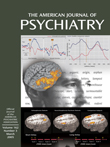Psychotherapy is a furrowed field, a rutted road often difficult to travel. This book considers the clinically reasonable premise that the most frustrating aspects of patients’ presentations reveal key pathology and thus provide opportunities for change. Good clinicians can anticipate some of these “roadblocks,” predict them to patients, and strategize solutions. Although the chapter authors in this volume focus on cognitive behavior therapy, the issues are psychotherapeutically and indeed clinically universal. (The authors might have ventured occasionally beyond cognitive behavior therapy to discuss therapeutics more broadly.) The book provides a useful map around roadblocks in difficult terrain.
The first of the volume’s five sections endorses case conceptualization for understanding and solving roadblocks. Without a formulation, the practitioner may lose the road along with the patient. Needleman provides examples of cognitive case conceptualizations, incorporating concepts such as Prochaska and DiClemente’s transtheoretical model of readiness for change and considering cognitive behavior therapy indications for particular disorders as well as complications of comorbidity.
The second section’s three chapters address emotion, a crucial psychotherapeutic ingredient that therapists mechanically reliant on cognitive behavior therapy techniques may neglect. Section 3 describes cognitive behavior therapy for patients with specific disorders: psychosis, bipolar disorder, posttraumatic stress disorder (PTSD), and binge-eating disorders. A fourth section comprises rather basic chapters on couple and family therapy, and the chapters in the final section concern “difficult-to-treat” patients (dialectical behavior therapy for patients with borderline personality disorder), negotiating alliance ruptures, angry patients, and medication compliance with difficult patients.
As expected in a multiauthored volume, chapters vary in utility and sophistication. “Roadblocks” means different things to the authors, who treat disparate patients. Nonetheless, themes emerge. Therapist factors, patient factors, their interaction, and the patient’s environment and psychopathology all influence treatment outcome. Clinicians should make accurate diagnoses; employ case formulation; contract with patients on treatment goals; listen empathically, attuned to patients’ distress; and examine their own emotions in the therapeutic relationship. Clinicians must work creatively and flexibly and foster a therapeutic alliance—the psychotherapeutic variable most often linked to good outcome. If treatment reaches an impasse, therapists should reconsider their approach—too few actually do—and consider consultation. Several authors caution therapists not to blame patients for not improving. These observations generally reflect “common factors” of psychotherapy
(1) and good common clinical sense.
Are there roadblocks specific to cognitive behavior therapy? Several authors stress helping patients to succeed at homework, since homework completion correlates with success in cognitive behavior therapy. Multiple contributors warn against focusing on cognitive behavior therapy technique rather than the patient. Intellectualization compromises any psychotherapy, but the emphasis here suggests that it constitutes a frequent roadblock for cognitive behavior therapy. The book thus confirms the stereotype of ineffective cognitive behavior therapy as a therapist hammering away at cognitions and dysfunctional thoughts while ignoring the feelings and individuality of the patient. Therapeutic alliance remains crucial to outcome. Good treatment depends on common factor strategies, which cognitive behavior therapy techniques may augment.
The section on disorders is readable and practical. It not only details roadblocks but also maps unobstructed avenues to cognitive behavior therapy of particular syndromes. This may benefit clinicians familiar with cognitive behavioral treatment who have not yet applied it to patients with psychosis, bipolar disorder, or other disorders. For example, Haddock and Siddle note that psychotic patients have been prescribed cognitive behavior therapy on the basis of symptoms rather than diagnosis, and that engaging such detached patients in any kind of dialogue is “by far the most important roadblock to overcome” (p. 137). Surprisingly, depression and panic disorder, two of the best-studied cognitive behavior therapy indications, receive no comment. The eating disorder chapter is rudimentary, and that on PTSD presents a cognitive behavior therapy intervention “treatment algorithm” that appears premature in the light of available evidence.
Roadblocks may be inherent to diagnosis: the dialectical behavior therapy chapter presupposes that borderline personality means “difficult” patients. The dialectical behavior therapy stance of emotional regulation, validating patient feelings, and balancing stasis and change is surely salubrious across diagnoses. The chapter on using cognitive behavior therapy to address problematic beliefs about medication is clinically compelling.
Readers may ask whether there is one cognitive behavior therapy under discussion or several. The ”Self-RegulatoryExecutive Function” model (chapter 4), a meta-cognitive approach, seems to occupy its own, discrete world. Leahy’s emotional schemas (chapter 5) provide another wrinkle, emphasizing patients’ emotions in cognitive behavior therapy. Holland (chapter 6) discusses emotional processing and emotional avoidance, following Greenberg’s chapter on emotion-focused therapy. It is unclear how these conceptual approaches overlap and when one meta-theory might be preferable to another. Other authors mix cognitive behavior therapy with approaches like motivational interviewing. Stevens et al., who underscore the importance of therapists’ and patients’ feelings in recognizing and repairing therapeutic ruptures, repackage (unattributed) psychodynamic and interpersonal wisdom for cognitive behavior therapists.
Strengths of this volume include numerous clinical pearls and vignettes. The authors candidly reassure readers that even experts reach impasses and fail. Contributors frequently base recommendations on empirical research, although it is unclear how often they prescribe the time-limited cognitive behavior therapy from which this research derives. The book suffers from inevitable repetition and theoretical diffusion. Psychiatrists may grumble that case conceptualizations focus on cognitive schemata rather than DSM diagnoses and that some authors describe “clients” rather than “patients.” No one discusses when to give up on a “roadblocked” treatment.
A repeated recommendation for stalled treatment is to seek expert consultation. This book may provide such consultation to readers. The ultimate test of a practical volume is how usefully it serves the reader’s clinical practice. I tried suggested maneuvers with difficult-to-treat patients, and some did help us to move down the road.

